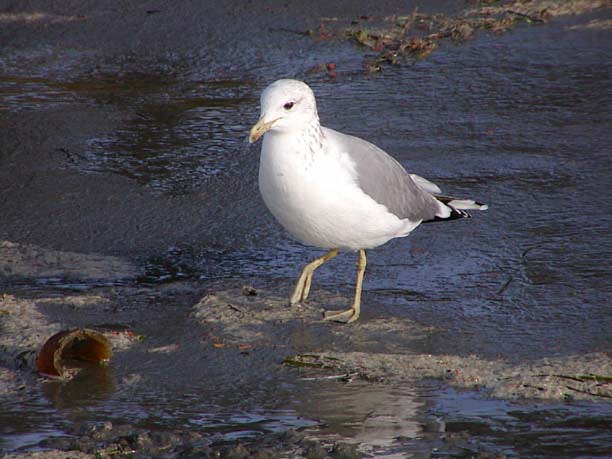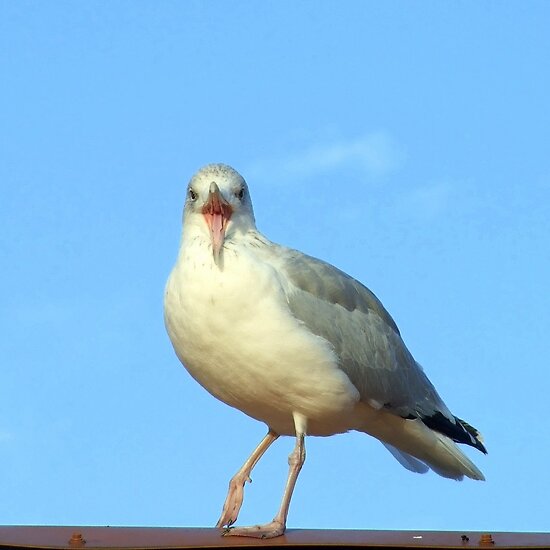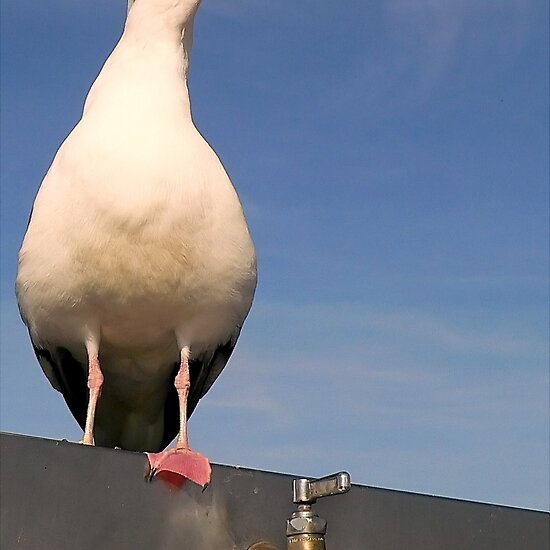August 31, 2011
Who's Creating Wednesday: Cathy Mazur
by Lizeth Alvarez
Q: Why is creativity important to you?
A: Creativity is an outlet in which you can express yourself and share your ideas with others. A world absent of creativity would not allow society to push boundaries and lead to brighter futures.
Q: What do you enjoy the most?
A: Writing and creating stories for children. In my experience children are impressionable at an early age and I believe reading is a great way to help expand their minds and enable their development.
Q: Do you have any fears when creating?
A: The only fear I have is writing is a new adventure for me and I don’t know what to expect, but that fear of the unknown becomes easier as I step further away from my comfort zone.
Q: Are your friends and family supportive of the things you create?
A: Yes, my family and closest friends support me 100%. They provide a solid base of positive energy that I leverage when I need a boost.
Q: How do you find time to create?
A: Fortunately, I am retired from teaching and now have found more time to create. I recognize that for everyone time is at a premium but I would challenge those who want to create to focus on one project at a time and dedicate all of the time that can be afforded to it.
 Born in Scranton, Pa., Cathy Mazur is the daughter of Gary and Catherine H. Errico. She was educated in the Dunmore public school system and graduated from Dunmore High School in 1971. She received a bachelor’s degree in Library Science from Mansfield State College in 1975. She received a Reading Specialist Certificate from the University of Scranton in 1978. Cathy was employed as an elementary school librarian for the Mid Valley School District from 1975 until her retirement in 2010. While at Mid Valley, she instituted and coordinated the RIF (Reading Is Fundamental) program for 33 years helping students to develop a love of reading outside the classroom. Cathy served on the Board of Directors for the Valley Community Library in Peckville, Pa. for over 20 years acting as president for one year and board secretary for 19 years. She presently serves on the library’s Developmental Committee chairing various fundraising events. She resides in Dickson City, Pa. with Frank, her husband of 31 years. They are the parents of two children, Gary, 27 and Gia, 19. Now in her retirement, she is focused on writing books for children like Stanley Seagull.
Born in Scranton, Pa., Cathy Mazur is the daughter of Gary and Catherine H. Errico. She was educated in the Dunmore public school system and graduated from Dunmore High School in 1971. She received a bachelor’s degree in Library Science from Mansfield State College in 1975. She received a Reading Specialist Certificate from the University of Scranton in 1978. Cathy was employed as an elementary school librarian for the Mid Valley School District from 1975 until her retirement in 2010. While at Mid Valley, she instituted and coordinated the RIF (Reading Is Fundamental) program for 33 years helping students to develop a love of reading outside the classroom. Cathy served on the Board of Directors for the Valley Community Library in Peckville, Pa. for over 20 years acting as president for one year and board secretary for 19 years. She presently serves on the library’s Developmental Committee chairing various fundraising events. She resides in Dickson City, Pa. with Frank, her husband of 31 years. They are the parents of two children, Gary, 27 and Gia, 19. Now in her retirement, she is focused on writing books for children like Stanley Seagull.
You can get Cathy’s book Stanley Seagull at http://www.StanleySeagull.com





 Some people view seagulls as nuisance birds, as they damage crops and threaten human safety. Seagulls are known to collide with aircraft more often than any other birds. They also have a tendency to build their nests on rooftops and swoop down to snatch food while people are eating outdoors. As they tend to scavenge from dumpsters, there is a risk of transmitting diseases to humans when they roost near water reservoirs.
Some people view seagulls as nuisance birds, as they damage crops and threaten human safety. Seagulls are known to collide with aircraft more often than any other birds. They also have a tendency to build their nests on rooftops and swoop down to snatch food while people are eating outdoors. As they tend to scavenge from dumpsters, there is a risk of transmitting diseases to humans when they roost near water reservoirs.
 Seagulls lay just a single clutch of eggs once a year. The bird nests in large colonies, with each gull laying between 2 and 3 eggs. The incubation period varies from species to species and generally both parents help to incubate the eggs. Nests are made from stones, sticks and twigs and are built on the ground. The young stay close to the nest for five to six weeks after hatching, and then they are ready to learn scavenging and hunting skills from their parents.
Seagulls lay just a single clutch of eggs once a year. The bird nests in large colonies, with each gull laying between 2 and 3 eggs. The incubation period varies from species to species and generally both parents help to incubate the eggs. Nests are made from stones, sticks and twigs and are built on the ground. The young stay close to the nest for five to six weeks after hatching, and then they are ready to learn scavenging and hunting skills from their parents. Gulls, more often known as seagulls, are seen in coastal areas on cliffs, coastal towns and low-lying coastal regions. However, they are also seen inland, around dumpsters and parking lots. Gulls are comfortable living inland or along the shore, as long there is food supply in the vicinity. Seagulls are primarily scavengers, but they eat fish, shrimps, prawns, small birds and mammals, eggs, crabs, carrion, grains and edible rubbish. The birds prefer scavenging for food around dumpsters and fishing harbors rather than catching fish at sea.
Gulls, more often known as seagulls, are seen in coastal areas on cliffs, coastal towns and low-lying coastal regions. However, they are also seen inland, around dumpsters and parking lots. Gulls are comfortable living inland or along the shore, as long there is food supply in the vicinity. Seagulls are primarily scavengers, but they eat fish, shrimps, prawns, small birds and mammals, eggs, crabs, carrion, grains and edible rubbish. The birds prefer scavenging for food around dumpsters and fishing harbors rather than catching fish at sea.
 These birds are large to medium in size with white or gray feathers. Depending on the species, gulls are between 11 and 30 inches in size. Many species have black markings on their heads or wings. Their bills are stout, strong and slightly hooked and their feet are webbed. Their wings are long and pointed, having a wingspan of 3 to 4 feet. They are closely related to terns and distantly to auks. Coloration of many seagulls is seasonal or may change as they mature. During the breeding season, generally adult seagulls have white heads. These include herring gulls, great black-backed gulls, western gulls and glaucous-winged gulls. However, some species, such as Bonaparte's gulls and Franklin's gulls have dark-colored hoods during the breeding season. During winter, gulls with white heads develop streaks on their head, while hooded gull species tend to have a dark spot on the head.
These birds are large to medium in size with white or gray feathers. Depending on the species, gulls are between 11 and 30 inches in size. Many species have black markings on their heads or wings. Their bills are stout, strong and slightly hooked and their feet are webbed. Their wings are long and pointed, having a wingspan of 3 to 4 feet. They are closely related to terns and distantly to auks. Coloration of many seagulls is seasonal or may change as they mature. During the breeding season, generally adult seagulls have white heads. These include herring gulls, great black-backed gulls, western gulls and glaucous-winged gulls. However, some species, such as Bonaparte's gulls and Franklin's gulls have dark-colored hoods during the breeding season. During winter, gulls with white heads develop streaks on their head, while hooded gull species tend to have a dark spot on the head.
 Seagulls belong to family Laridae, which also includes terns. In North America, there are 23 species of gulls. Lifespan of seagulls varies, depending on the species. Some species, such as herring gulls, have a lifespan of 30 or more years, while others, such as ring-billed gulls, live for 10 to 15 years.
Seagulls belong to family Laridae, which also includes terns. In North America, there are 23 species of gulls. Lifespan of seagulls varies, depending on the species. Some species, such as herring gulls, have a lifespan of 30 or more years, while others, such as ring-billed gulls, live for 10 to 15 years.
 In coastal towns, seagulls make pigeons appear very small and innocuous. Gulls are large, determined birds and remarkably good at ripping open garbage bags to get food. This, of course, looks extremely messy. It is also unhygienic. Household garbage scattered all over the place attracts insects and rodents. To stop seagulls creating miniature landfill sites next to your home, make it impossible for them to access the bags in the first place.
In coastal towns, seagulls make pigeons appear very small and innocuous. Gulls are large, determined birds and remarkably good at ripping open garbage bags to get food. This, of course, looks extremely messy. It is also unhygienic. Household garbage scattered all over the place attracts insects and rodents. To stop seagulls creating miniature landfill sites next to your home, make it impossible for them to access the bags in the first place.
 Whether you live near a large body of water or are vacationing near one, it can be fun to feed seagulls. Sometimes, you can even throw food into the air and watch the seagulls retrieve it. Other times, you can place the food on the ground and watch the gulls land to eat it.
Whether you live near a large body of water or are vacationing near one, it can be fun to feed seagulls. Sometimes, you can even throw food into the air and watch the seagulls retrieve it. Other times, you can place the food on the ground and watch the gulls land to eat it.
 Seagulls are omnivorous, meaning that they have a wide and varied diet, including both meat and vegetables. There are several different types of gull, all falling under the umbrella term of "seagull." While the birds differ in appearance, their diets are very similar.
Seagulls are omnivorous, meaning that they have a wide and varied diet, including both meat and vegetables. There are several different types of gull, all falling under the umbrella term of "seagull." While the birds differ in appearance, their diets are very similar.
 Intelligence is difficult to measure in animals since humans cannot communicate with them. However, scientists shed some light on intelligence by observing animals. Gulls are thought to be intelligent birds. Two particular observations of intelligence are their strategy development and problem solving skills. Gulls use strategy to figure out ways to steal food from other animals. They also have found an interesting way of eating hard-shelled fish. To gain access to the meat inside the hard shelled surface, gulls fly up in the air and drop the hard-shelled fish. They repeat this process over and over until the shell is broken.
Intelligence is difficult to measure in animals since humans cannot communicate with them. However, scientists shed some light on intelligence by observing animals. Gulls are thought to be intelligent birds. Two particular observations of intelligence are their strategy development and problem solving skills. Gulls use strategy to figure out ways to steal food from other animals. They also have found an interesting way of eating hard-shelled fish. To gain access to the meat inside the hard shelled surface, gulls fly up in the air and drop the hard-shelled fish. They repeat this process over and over until the shell is broken.
 Gulls are capable of drinking both salt water and fresh water. The reason gulls can drink salt water is due to glands they have called "salt glands." These salt glands remove the salt content from the water. The gulls then eliminate the salt through their nostrils.
Gulls are capable of drinking both salt water and fresh water. The reason gulls can drink salt water is due to glands they have called "salt glands." These salt glands remove the salt content from the water. The gulls then eliminate the salt through their nostrils.

 Gulls eat fish, mollusks, crustaceans, insects, worms, eggs and rodents and they scavenge food from humans. In fact, gulls are experts at it and easily become accustomed to getting easy meals. Easy meals are food items obtained from trash cans and other discarded human food. It is not uncommon to see gulls at the beach or in urban areas stealing food from trash cans or picnic sites. Sometimes gulls steal food from each other or other species of birds.
Gulls eat fish, mollusks, crustaceans, insects, worms, eggs and rodents and they scavenge food from humans. In fact, gulls are experts at it and easily become accustomed to getting easy meals. Easy meals are food items obtained from trash cans and other discarded human food. It is not uncommon to see gulls at the beach or in urban areas stealing food from trash cans or picnic sites. Sometimes gulls steal food from each other or other species of birds.
 Many gulls live near the ocean, which is why people commonly refer to them as sea gulls. But despite the common name, some gulls live inland. Gulls are opportunistic feeders and have adapted to urban environments. It is not uncommon to find gulls in non-coastal urban areas scrounging for food. Some residents in urban classify gulls as pests. Gulls live in colonies (groups of gulls). The colonies usually sleep together in areas where they will not be disturbed by humans.
Many gulls live near the ocean, which is why people commonly refer to them as sea gulls. But despite the common name, some gulls live inland. Gulls are opportunistic feeders and have adapted to urban environments. It is not uncommon to find gulls in non-coastal urban areas scrounging for food. Some residents in urban classify gulls as pests. Gulls live in colonies (groups of gulls). The colonies usually sleep together in areas where they will not be disturbed by humans.
 The name sea gull, or seagull, is not the exact name for any one type of bird. Sea gull is a broad term that people use to describe any one of 43 species of gull birds. The scientific classification for gulls is: Order - Charadriiformes, Family - Laridae, Subfamily - Larinae, Genus - Larus (Gulls). Three types of gulls of the 43 gull species are the California Gull, Herring Gull and the Kelp Gull.
The name sea gull, or seagull, is not the exact name for any one type of bird. Sea gull is a broad term that people use to describe any one of 43 species of gull birds. The scientific classification for gulls is: Order - Charadriiformes, Family - Laridae, Subfamily - Larinae, Genus - Larus (Gulls). Three types of gulls of the 43 gull species are the California Gull, Herring Gull and the Kelp Gull. There are over 40 different types of birds that are commonly referred to as sea gulls. Many people do not even realize that there is more than one type of sea gull. Sea gulls are a common site in coastal areas, but they are increasingly growing in numbers in inland areas as well. Gulls are far from shy, often coming close to humans and even harassing humans for food. Despite the fact that so many people have had opportunities for close access to sea gulls, few people know much about them.
There are over 40 different types of birds that are commonly referred to as sea gulls. Many people do not even realize that there is more than one type of sea gull. Sea gulls are a common site in coastal areas, but they are increasingly growing in numbers in inland areas as well. Gulls are far from shy, often coming close to humans and even harassing humans for food. Despite the fact that so many people have had opportunities for close access to sea gulls, few people know much about them.
 Seagulls, those sometimes-pesky birds that are typically found around shore and beach areas, have to eat, just like most species, in order to survive. Seagulls have existed for a long time, and many scientists and animal experts have studied their behavior and existence in order to better understand them. One of the crucial areas of study has been the seagull’s diet. You may be interested to know what seagulls eat, and you will find an answer to your curious question below!
Seagulls, those sometimes-pesky birds that are typically found around shore and beach areas, have to eat, just like most species, in order to survive. Seagulls have existed for a long time, and many scientists and animal experts have studied their behavior and existence in order to better understand them. One of the crucial areas of study has been the seagull’s diet. You may be interested to know what seagulls eat, and you will find an answer to your curious question below!